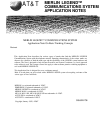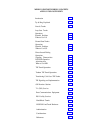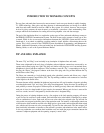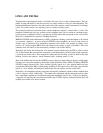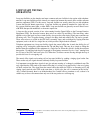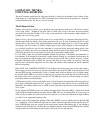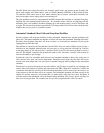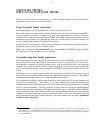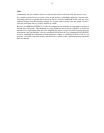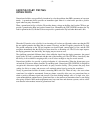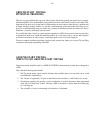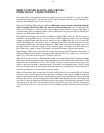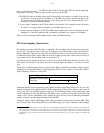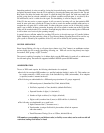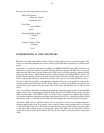
-4-
LOOP-START TRUNKS:
OPERATIONS
Loop-start facilities are the simplest and most common end-user facilities in the nation-wide telephone
network. Loop-start facilities provide virtually no supervision between the central office and the customer
premises equipment (CPE). For this reason, loop-start facilities are usually suited for use with telephone
systems that provide human supervision.
Loop-start facilities are primarily intended for single line sets,
key systems with line status lights, or older PBXs. Loop-start facilities are generally not well suited for use
with PBXs that provide mechanical or electronic supervision.
A loop-start line or trunk consists of two wires running from the Central Office to the Customer Premises
Equipment (CPE). For historical reasons these wires are called Tip and Ring. (The term Ring, when
applied to one of the leads in a line or trunk facility, does not refer to the ringing signal sent to announce an
incoming call.) The CO applies battery voltage to the Ring lead and connects the Tip lead to ground.
These wires meet at a switch in the CPE that is normally open, and are bridged by ringing detection
equipment (such as the bell in a single line set) which provides a.high electrical resistance.
1
Telephone equipment on a loop-start facility signals the central office that it needs the facility for an”
outgoing call by closing this switch between the Tip and Ring leads. This may be as simple as lifting the
handset from the switchhook if the equipment is a single line set. When this switch is closed the resistance
between the 17p and Ring leads drops low enough to allow battery current to flow in a “loop” running from
the CO out to the CPE, and back to the CO. When the CO detects current flowing through the loop it
provides dial tone for an outgoing call.
The central office signals an incoming call on loop-start facilities by sending a ringing signal on the line.
These are the only two signals that are uniformly used by loop-start facilities.
It is important to note that these signals do not give advance warning of a change in switchhook state. The
only signal that the CPE sends to the central office that it is seizing a loop-start facility is the act of going
off-hook on that line. The signal from the central office that alerts the CPE to an incoming call is the
ringing signal received at the CPE at the same time
or slightly after
the call is connected to the facility.
2
Also, it should be noted, there is no defined method for a central office to terminate a call, so there is no
reliable way to force a disconnect when only one of the two parties on a call hangs up.
1. Actually, the proper term here is impedance, not resistance, but the effect is the same for all practical purposes, no current flows.
2. See The Problem of Glare in the next section.



